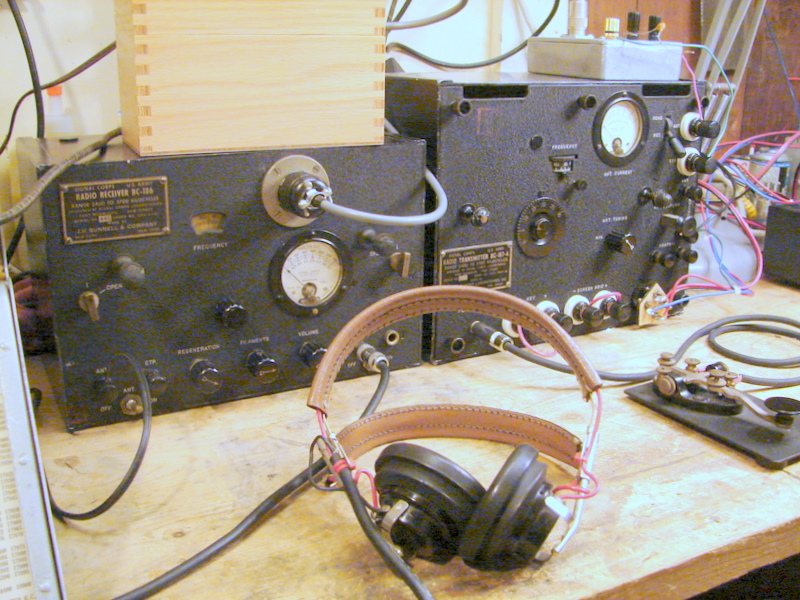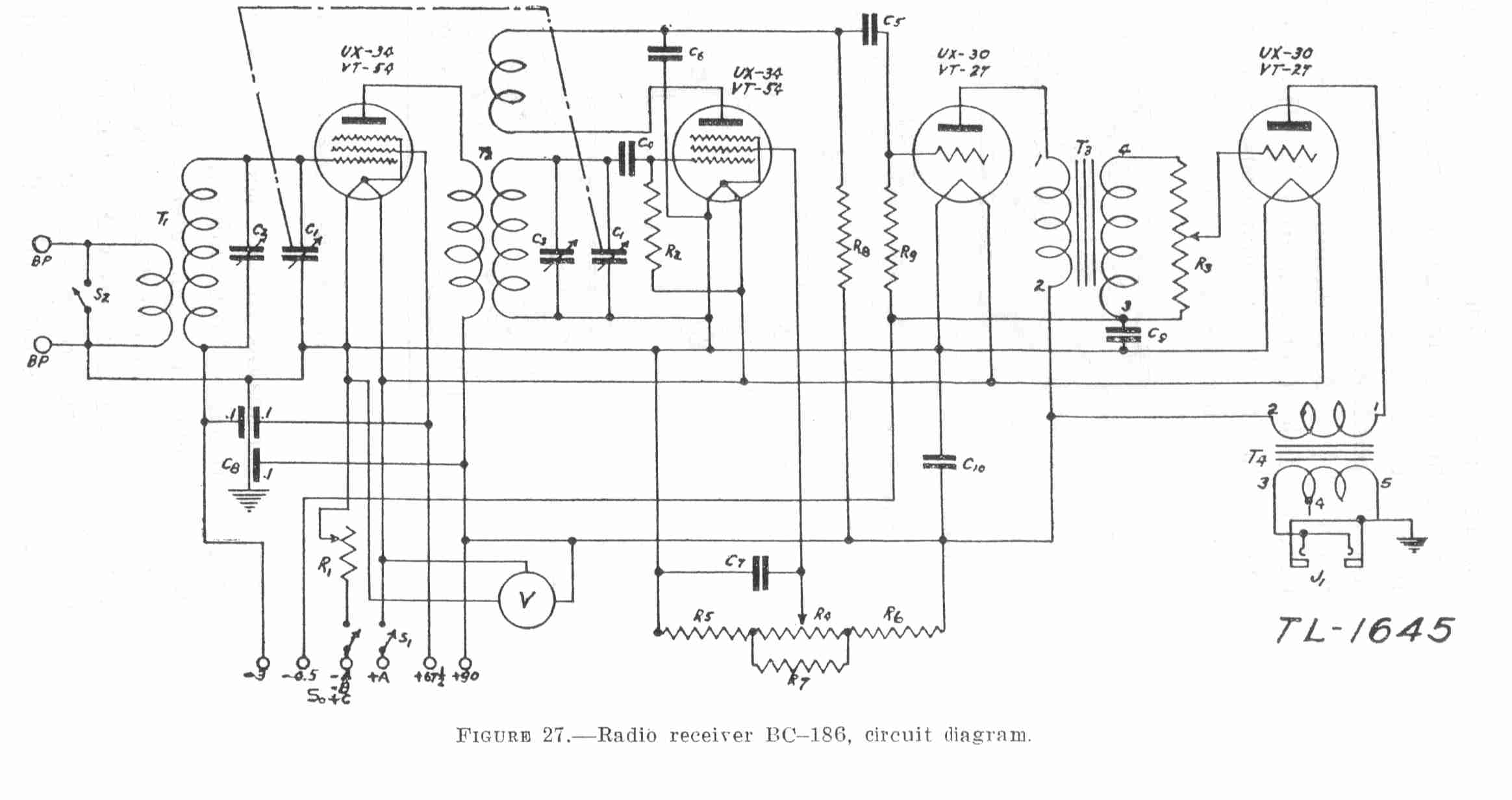
The equipment is fun to use for casual QRP if the band is not crowded.
Thankfully for the soldiers, more modern equipment was deployed as the war progressed.
Here is the TX and RX set up for operation on the bench.

Here is a drawing of the equipment as it is packed in a wooden transit case that has a drop down front that serves as a shelf. In addition to the TX and RX is a battery box for the receiver, and a screen modulator unit (BC-188) for low power AM use. The TX was powered by a hand crank generator set.

Here is a shot of the complete set packed for transport.

The BC-186 receiver I have was manufactured by J.H. Bunnell & Co. The receiver is a regen design that uses four 2 volt filament battery tubes. VT-50s are used for RF amplifier and regenerative detector, and there are two stages of audio amplification using VT-27s. The RX is very sesnsitive and easily overloaded, I have used a BC221 frequency meter to aid in TX spotting in CW operation. SSB reception is a challenge, because the tuning is very fast. Some degree of vernier tuning can be achieved by varying the filament voltage control in small amounts. The meter reads filament voltage for adjustment purposes, if the button on the meter is pressed, it read B+ battery voltage. I power the receiver with a collection of dry cells, described below.
In this view of the receiver the nearest tubes are carried on a vibration isolated sub chassis, this holds the detector and audio amplifiers. The cylinders are the antenna and detector coils, they are plug-in designs, though operation on other bands is not discussed in the manuals. The construction is very nice.
Here is the underside of the receiver. When I obtained this unit, the interstage audio transformer (one of the black units in the middle) was open circuit. I carefully opened and depotted the original, and installed a modern replacement in the original can, a repair that I am somewhat proud of.
Here is the receiver circuit. No surprises here. It runs on a collection of battery voltages: -4.5, -3.0, 3.0, 67.5 and 90 volts.

My transmitter was manufactured by Dumont Laboratories. It is a basic master oscillator - power amplifier (MOPA) design putting out about 8 watts into a low impeadance load. The antenna coupling control is a pull-out knob, sort of like the choke on older cars, that moves a coupling link with respect to the tank coil. An RF Ammeter is used to tune for maximum antenna current.
The transmitter chirps mildly in CW operation, and drifts noticeable on powerup. The transmitter uses 7.5 volts DC at about 3.5 amps for filaments and 600 volts on the plates.
The oscillator compartment of the transmitter showing the VT-25 triode oscillator. Note the beautiful construction.
Here is the PA compartment, showing the VT-55 amplifier. The antenna loading coil is internally adjustable (visible behind tube), with a panel trimming capacitor.
Here is the TX circuit. The output network is somewhat unusual, lacking a tank capacitor. It was designed to work into a fairly short whip antenna. I find that it loads well into a 12.5 ohm load thru a 180 PF capacitor (by way of a 2:1 ferrite toroid balun type transformer).

I built this battery box from an index card file, it uses three AA batteries for bias, two D cells for filaments, and ten 9 volt batteries for plate and screen voltages.
